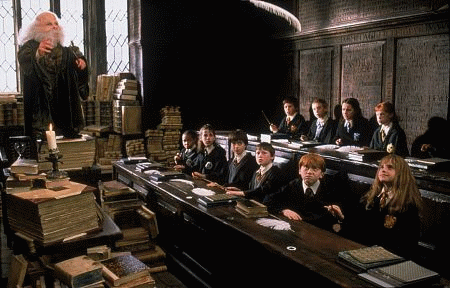Star
Wars: A New Hope – Film
Review
My
original intent was to review a movie that was not popular so that I might make
a persuasive argument for or against the movie’s fantasy genre. However, after
recently re-watching the Star Wars saga,
I quickly saw that there was no better fantasy movie to review for this project.
Even so, the hardest task in reviewing a film so incredibly rich as this is to
choose what not to analyze.
Star Wars, originally released in 1977, was
released during the Cold War to a generation desperate for hope. The Vietnam
War had recently ended in a terrible defeat – Communism was spreading day by
day. The Watergate Scandal had greatly demoralized the American people. And with
trembling, the world seemed realize that it was on the brink of yet another
world war. Against a backdrop of fear and despondency, however, something good
did happen. Within the last decade, humankind had traveled through space and
landed on the moon, returned home, and gone back again.
With
a historical perspective in mind, it does not seem too surprising that Star Wars met with such instant and
outstanding success. The audience was finally given a hero they could put their
hope in – a farm boy who broke free from the ordinary and traveled into the
vast expanse of the extraordinary. This is a movie I have now seen too many
times to count, for I have been watching it along with the other installments
of the saga since I was nine-years-old. It is, as it was the first time I
watched it, a film that feels strikingly familiar, yet at the same time undeniably
unique.
Star Wars quickly draws us to a
difficult place, however, for it can seemingly be classified as either science
fiction or fantasy. However, I argue that although the story does bear several
traits of science fiction, it is undoubtedly fantasy. The story employs
fantastic elements (aliens and androids of all kinds) in a realistic manner,
shows a moving from the primary world and into the secondary (from Tatooine to
deep space) possesses some references to medieval ideas (Jedi knighthood and
“civilized weapons”), utilizes magic (the all-powerful Force), and deals with a
struggle between good and evil (the light side and the dark side).
Most importantly, however, this story is
set in another time and in another place. Instead of being set in the future
(like science fiction is), it is set in the distant past. In fact, the film
seems to draw special attention to the story’s setting, for the first words in
the movie are as follows: “A long time ago, in a galaxy far, far away…” The
story is removed in time indefinitely, and
removed in place explicitly. Indeed, there seems to be no place further to
go than galaxies away – especially
galaxies that are “far, far” away.
In his essay “On Fairy-Stories”, J. R. R.
Tolkien argues that true works of fantasy deal with the satisfaction of
desires. “One of these desires,” he says, “is to survey the depths of space and
time” (326). Indeed, the story of Star
Wars seems to be making a deliberate reference to its setting, which reveals
something vital to the telling of the story. It is the function of escapism—and
escapism at the highest possible form.
Later in the same essay, Tolkien
deliberated on the topic of escapism. He claimed that it was indeed one of the
main functions of fairy-stories (375). We, as viewers are not just pulled out
of our own country, but out of our own world, solar system, and even galaxy.
The “once upon a time” is perfectly intact, but the physical setting is unique
to this story because it cannot possibly be reached by the viewer, yet at the
same time seems much more likely than a place that has no reference at all to
our world. Interestingly enough, this reference to our world is extremely
important to escapism in this film.
More than this, however, we are able to
witness multiple worlds of wonder – not just one. Here we indeed find the
“depths of space” that Tolkien spoke of (326), and the desire it creates is
well satisfied in Star Wars.
Not only does the story immediately draw
us out of the primary world and into the life of Luke Skywalker in a time and
place that is not our own, but it also shows Luke making the transition from
the secondary world and into a tertiary world – which might be thought of as Luke’s secondary world.
We are first introduced to this protagonist
on the world called Tatooine – Luke is a farmboy who longs for adventure and a
life outside of his own. Here is an interesting case of the escapist desiring
escapism. Skywalker is finally granted his wish when he encounters the old and
wizened Obi-Wan Kenobi. Together, they leave the secondary world and begin an
adventure in a tertiary world.
This drawing out of worlds is a highly
effective means of escapism. The usual means of it seem to be greatly increased
by this extra removal from the primary world. Although we are intended to start
off longing to escape our world, we seem to end up longing for Luke to escape
his as well. We find satisfaction through living vicariously through this character.
For these reasons, I argue that Star Wars is not only a proper fantasy that
utilizes the highest form of escapism, but also one of the most enchanting and
influential stories that has yet been told.


























